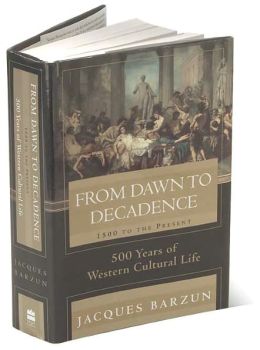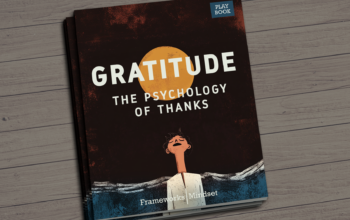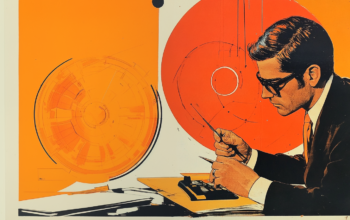This Book is 11,856 Pages Long
August 2008
After having read Jacques Barzun’s summa thirteen times, I have concluded that this book is not really 912 pages long as it appears in the product details, but rather 11,856 pages. Every time I read this masterpiece, I find new ideas and fresh material on every page. Seemingly, the book is an endless fount of intellect, culture, etiquette, morals, art, science, politics, and genius that serves as the capstone of the last era and the cornerstone for the next.
The first thing to note about From Dawn to Decadence is that it is no ordinary history. It is a `cultural history’ (Barzun is the preeminent scholar in that department), which means that you will not get a thorough account of the events and even personalities of the last 500 years.
Culture is made up of the people in general, social trends, and the product of man, and so historical elements such as war and disaster, which are admittedly important to understanding our past, are not covered here. The author does investigate the lives of prominent people and of course explores the events, but does so only with regard to the `ideas’ that have arisen in our era. With that focus, Barzun uses the historical pretext to uncover the kind of truths about life that can only be found in philosophical works.
The ideas are summarized in the Part heads, whose style mirror the book’s title. They take the reader `From Luther’s Ninety-five Theses to Boyle’s Invisible College’; `From the Bog and Sand of Versailles to the Tennis Court’; `From Faust, Part I, to “Nude Descending a Staircase No. 2″‘; and `From “the Great Illusion” to “Western Civ Has Got to Go”‘. Through each transition, one can see how Western man grows and develops from a restless, nascent people to a mature, decadent culture.
Do not read this book hoping to get a fresh reiteration of what we learn in modern media or even what we learn in school about what was important in our history, especially of the 20th century. You will be disappointed to find that the Great Depression and World War II are mentioned only in passing and Ernest Hemmingway and Jackson Pollack are not touted as amazing geniuses. Do not expect to read about Ayn Rand or the Beatles.
These elements of our past that we believe to be so important in our lives are shown to be insignificant consequences of larger, more dominant historical forces. The people and events mentioned here are actually consequences of the historical force of Decadence, which, in a cultural history, is rightly demeaned. The reader realizes how insignificant the 20th century is after reading about the previous 400 years of cultural growth anyway. The people and events covered in first three parts are shown to be much more deserving of our attention and admiration.
One must smile upon reflection–Erasmus, Petrarch, Montaigne, Bruno, Pascal, Cromwell, Diderot, Beddoes, Hazlitt, Bagehot, William James. The modern reader does not recognize half of the names that Barzun features, but realizes once he has read about them what kind of genius they offered and why it is important to learn about them and multiply their ideas.
Attached to some of the names, but also quite independent elements in themselves, are the nine themes that this book presents: Emancipation, Primitivism, Reductivism, Analysis, Abstraction, Scientism, Secularism, Specialization, and Self-consciousness. Given small caps for designation, these themes appear throughout the story as currents that flow through the era’s cultural stream, each introducing its own captivating idea worth significant attention.
This technique and other innovations make From Dawn to Decadenc a ground-breaking work in style as well as in content. Barzun employs reference tools (forward and backward-pointing page numbers, `the book to read is’ recommendations, and unique formatting for section breaks) to accommodate study. He also institutes `add-ins’, which function like the familiar `pull-outs’, but offer the reader extra material in the form of “`the real self and voice’ of the persons in the drama.”
Aside from the original techniques, the book stands out because of Barzun’s literary genius, a talent that must rival the talent of all of history’s great writers. It would be a challenge to find another work that expresses so many ideas and educates so thoroughly while constantly engaging and entertaining the audience as this masterpiece does. The book must be considered a new standard for cultural history and letters in general as well as a benchmark for all future cultural works. There simply is not a more rewarding book out there.
Read this book once and your life will change forever. Read it a seventh time and you will vow to return to the book as often as possible. Read it a thirteenth time and you will agree that it is among the world’s greatest cultural treasures.





1 thought on “This Book is 11,856 Pages Long”